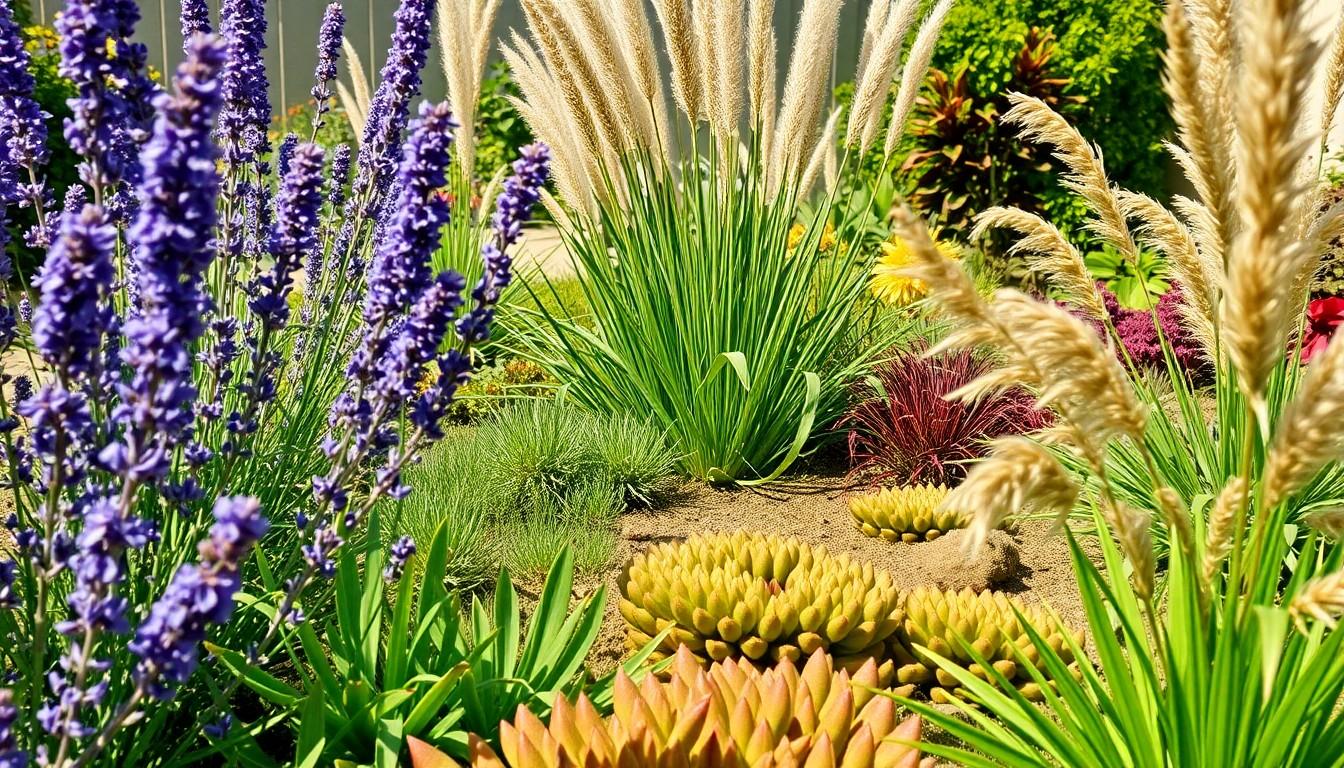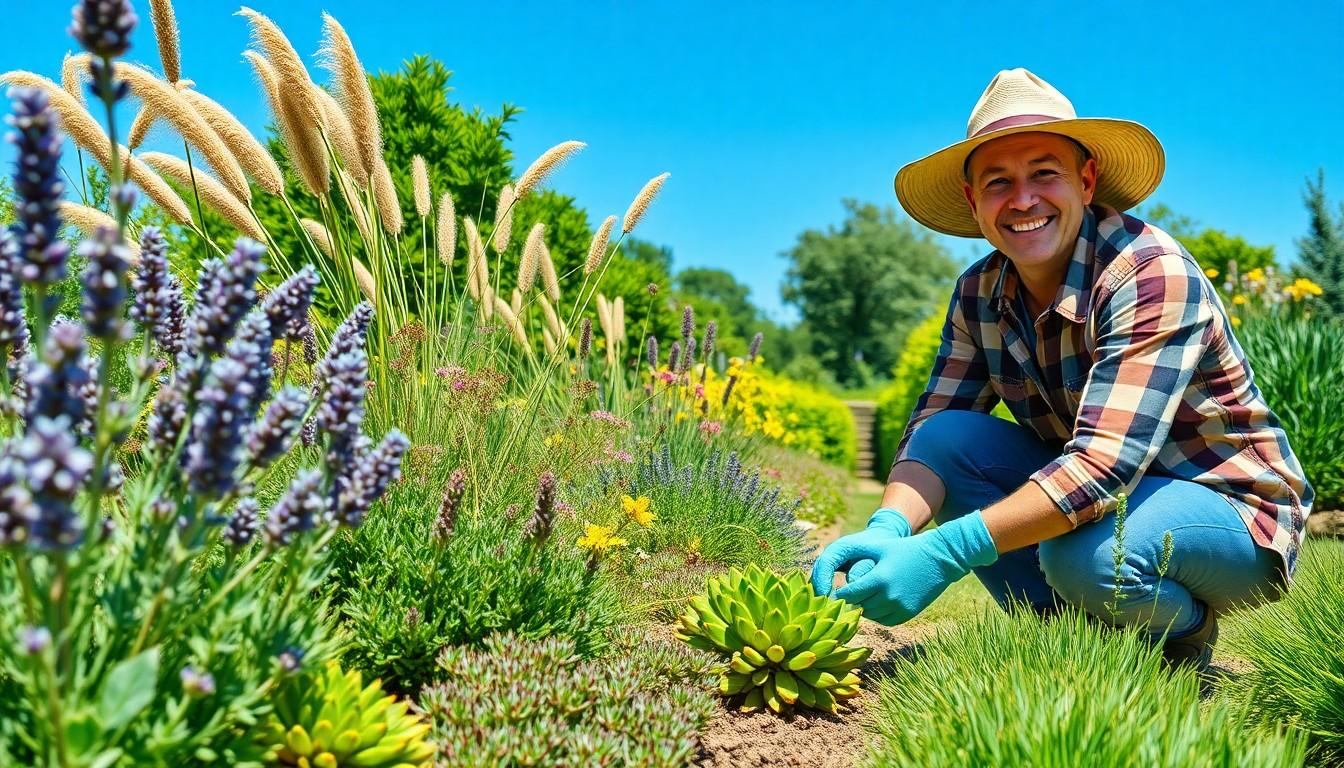Imagine a garden that thrives in sunshine, rain, or even that surprise snowstorm your neighbor swears will never happen. All-weather outdoor plants are the unsung heroes of the gardening world, ready to tackle whatever Mother Nature throws their way. These resilient beauties don’t just survive; they flourish, adding color and life to any landscape, no matter the season.
Whether you’re a seasoned gardener or just trying to keep that one potted plant alive, these hardy species are perfect for anyone who dreams of a vibrant garden without the constant worry of the weather forecast. With the right selection, your outdoor space can be a year-round paradise. So why not embrace the chaos of nature and let your garden shine, come rain or shine? After all, who wouldn’t want a little greenery that’s as tough as nails and still looks fabulous?
Understanding All Weather Outdoor Plants
All-weather outdoor plants exhibit remarkable resilience, thriving in diverse and challenging climates. These plants withstand extreme temperatures, intense sunlight, heavy rain, and frost. Characteristics such as drought tolerance, disease resistance, and robust growth patterns make them ideal for gardens aiming for low maintenance.
Choosing the right species contributes significantly to garden sustainability. Popular examples include lavender, sedum, and ornamental grasses. Each of these plants adapts easily to different soil types and environmental conditions. Furthermore, their ability to survive various weather scenarios means they remain attractive throughout the seasons.
Plant placement plays a crucial role in optimizing growth. Sunny spots benefit sun-loving varieties, while shady areas accommodate shade-tolerant species. Gardeners may achieve a balanced look by mixing different textures and colors.
Maintenance requirements for all-weather plants vary but typically involve minimal effort. Regular watering promotes healthy growth, while occasional pruning encourages bushiness and flowering. Understanding specific needs supports maintaining a vibrant outdoor space.
Additionally, these plants offer ecological benefits. They attract beneficial insects, support local wildlife, and contribute to soil health. Gardeners create a biodiverse habitat by incorporating a variety of resilient species.
All-weather outdoor plants stand as exemplary choices for gardeners seeking beauty and resilience. Their ability to thrive in fluctuating conditions ensures long-lasting enjoyment, making them essential to any outdoor space.
Benefits of All Weather Outdoor Plants

All-weather outdoor plants provide numerous advantages for any garden setting. Their unique characteristics contribute to more vibrant, sustainable landscapes.
Durability and Resilience
Durability stands out as a primary feature of all-weather plants. These plants resist extreme weather, including heat, cold, and heavy rain. Resilience allows them to thrive where traditional varieties may struggle or perish. For instance, lavender and sedum demonstrate strong drought tolerance, making them ideal for dry periods. Additionally, ornamental grasses can withstand high winds and maintain their structure even in adverse conditions. These attributes maintain the garden’s visual appeal year-round, providing a dependable foundation for outdoor spaces. With proper selection, gardeners can cultivate an enduring landscape that endures seasonal fluctuations.
Low Maintenance Requirements
Low maintenance requirements make all-weather outdoor plants an excellent choice for busy gardeners. Minimal care leads to significant time savings while preserving garden beauty. Regular watering typically suffices, as many hardy varieties adapt well to local rainfall patterns. Occasional pruning ensures healthy growth without extensive effort. Furthermore, these species are often resistant to common pests and diseases, reducing the need for chemical interventions. Ultimately, this combination of low upkeep and resilience promotes a thriving garden environment that appeals to diverse gardening styles.
Popular All Weather Outdoor Plants
All-weather outdoor plants include a variety of options that thrive in diverse climates. These hardy selections ensure gardens maintain their beauty regardless of changing conditions.
Perennial Flowers
Perennial flowers such as daylilies and coneflowers exhibit vibrant blooms year after year. Drought tolerance characterizes many of these plants, allowing them to flourish even during dry spells. Additionally, they attract beneficial pollinators, enhancing the ecological balance in the garden. Colorful options create visual interest from spring to fall, making them valuable additions to any landscape. Their adaptability to different soil conditions ensures they survive in various environments.
Evergreen Shrubs
Evergreen shrubs like boxwood and holly provide year-round foliage, adding structure and color to gardens. Resilience against temperature fluctuations keeps them looking lush in winter and summer alike. They serve as effective privacy screens or hedges, contributing to garden design while supplying shelter for wildlife. Minimal pruning is required to maintain their shape, making them low-maintenance choices. Furthermore, their wide variety allows for creative landscaping options that suit individual preferences.
Ornamental Grasses
Ornamental grasses, including fountain grass and blue fescue, offer movement and texture in outdoor spaces. Their ability to thrive with minimal water sets them apart as drought-tolerant choices. Each variety provides unique aesthetics, from tall and wispy to short and compact. Planting these grasses in clusters creates visually captivating displays throughout the seasons. Maintenance involves little more than occasional trimming, making them ideal for gardeners with busy schedules.
Tips for Caring for All Weather Outdoor Plants
Caring for all-weather outdoor plants involves understanding their needs in different environments. Optimizing their growth ensures continued beauty and resilience.
Soil Requirements
Soil plays a crucial role in plant health. Rich, well-draining soil supports robust root systems. It’s essential to select soil that retains moisture yet drains excess water efficiently. Sandy loam or loamy soil offers the best conditions for many hardy plants. Organic matter enhances soil fertility while promoting beneficial microbes. Testing soil pH may help choose plants that thrive in specific conditions. Amending the soil with compost can improve nutrient content. Regularly aerating the soil fosters better drainage. All of these steps create conditions for strong, healthy growth in all-weather plants.
Watering Practices
Watering practices significantly impact all-weather outdoor plants. Typically, it’s advisable to water deeply but infrequently. This encourages roots to grow deeper, improving drought resistance. During dry spells, checking soil moisture levels helps determine when watering is necessary. Spraying plants early in the morning minimizes evaporation losses. Rainwater collection can provide a sustainable water source. Adjust watering frequency based on seasonal changes and plant varieties. Ensuring proper drainage prevents root rot, which can be detrimental. Monitoring these practices maintains optimal plant health, essential for flourishing gardens in varying weather conditions.
Conclusion
All-weather outdoor plants stand as a testament to nature’s resilience and beauty. By selecting these hardy varieties, gardeners can enjoy vibrant landscapes that endure through the seasons. Their low-maintenance nature makes them an ideal choice for busy lifestyles while providing striking visual appeal year-round.
With the right care and placement, these plants not only thrive but also create a dynamic outdoor space that reflects personal style. Embracing all-weather plants allows anyone to cultivate a flourishing garden that withstands the test of time, weathering whatever Mother Nature has in store.

